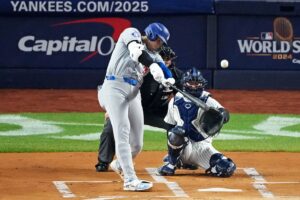Opening Day of the MLB season is finally here. Right now, 30-ball clubs believe they can make the playoffs. Fans nationwide can’t wait to visit their home ballpark for the first time in months. This season is set to be one of the most thrilling in the sport’s history. That’s because a new buzz surrounds the sport as MLB’s rule changes will try to speed up the game and make it more exciting. For years, fans have commented on how the games were becoming longer and less action-packed. At-bats were becoming a predictable coin toss between home runs or strikeouts, and single innings felt endless. Well, the MLB heard those complaints, and they delivered a solution. With a young generation of athletic superstars ready to lead the sport into its next era, the MLB rule changes will transform the game into a faster, more exciting product. Here are the new rules and the expected improvements.
MLB Rule Change Refresher
Pitch Clock
On September 9th, 2022, the MLB rules committee announced the new rules, and fans viewed the pitch clock as the most significant. With spring training in the rearview mirror, it’s clear the pitch clock will dramatically speed up games. Now, a timer will count from 15 seconds with the bases empty to 20 seconds with runners on. Pitchers will have no choice but to accept signs from the catcher and deliver them to home. Likewise, the days of batters stepping out of the box to adjust their gloves and collect themselves are over. According to the New York Times’ Tyler Kepner, games were 26 minutes faster than last spring. These rules will also limit a pitcher’s ability to pick off runners, leading to more aggressive base running. There will be some growing pains with this, no doubt. But players adjusted quickly this spring. A faster game creates more accessibility for fans, which should help the overall MLB product.
Spring training 2022 vs. 2023
Time of game
2022: 3:01
2023: 2:36Runs/game
2022: 10.6
2023: 11SB attempt/game
2022: 1.6
2023: 2.4BABIP on groundballs
2022: .235
2023: .258Strikeout rate
2022: 23.9%
2023: 23.1%More singles, stolen bases and runs — and 25 minutes faster.
— Jeff Passan (@JeffPassan) March 9, 2023
Shift Restrictions
The second rule that changes this season is restricting the defensive shift. When a pitch is thrown, two infielders must be on either side of the second base. In addition, all four infielders must have their feet in the infield. In recent seasons, batting averages have fallen to unseen lows due to shifting. This spring, the overall batting average on ground balls was .249, up from .233 a year ago. From now on, pull hitters should have more success reaching base. Runs are more likely to be manufactured in an “old school” way rather than being solely from long balls. And infielders will have more opportunities to show off their defensive skills. The more balls in play, the better. This rule change will infuse baseball with athleticism, a welcome sight to fans everywhere.
Bigger Bases
417 spring training MLB games in 2021:
492 stolen bases, 188 times caught stealing438 spring training MLB games in 2023:
767 stolen bases, 203 times caught stealingThat’s right. 275 more steals, 15 more times caught.
— Codify (@CodifyBaseball) March 27, 2023
In recent seasons, stolen bases have become an old part of baseball. In 1999, there was a total of 3,421 stolen bases. Last year, there were 2,487. Teams were weary of losing a baserunner with the potential for a home run at the plate. Major League Baseball initially changed the size of the bases from 15 square inches to 18 square inches to reduce collisions. But most experts believe a more extensive base, paired with pitchers’ pickoff restrictions, will lead to more aggressive base running. That’s precisely what we saw in spring training. Players like Ronald Acuna Jr.and Trea Turner could put up ridiculous numbers this year, threatening Alfonso Soriano’s 40-40 season of 2006. However it plays out, these rule changes will inject some energy into Major League Baseball.
Photo Credit:
Players mentioned:






